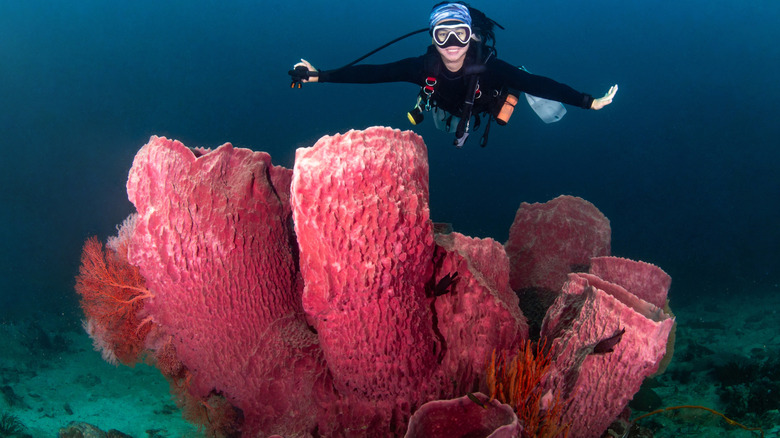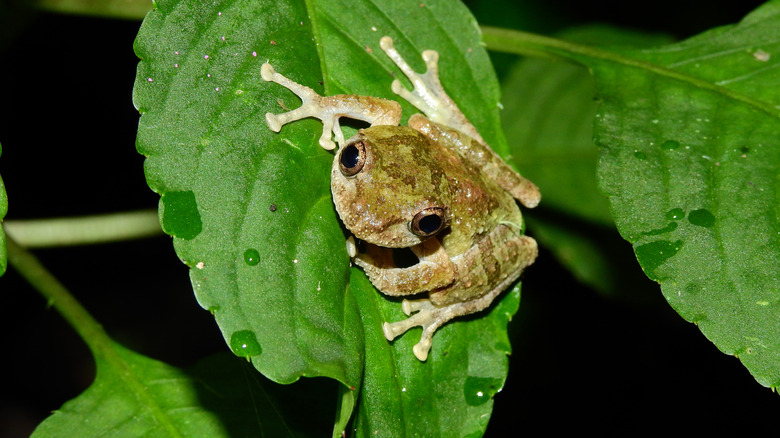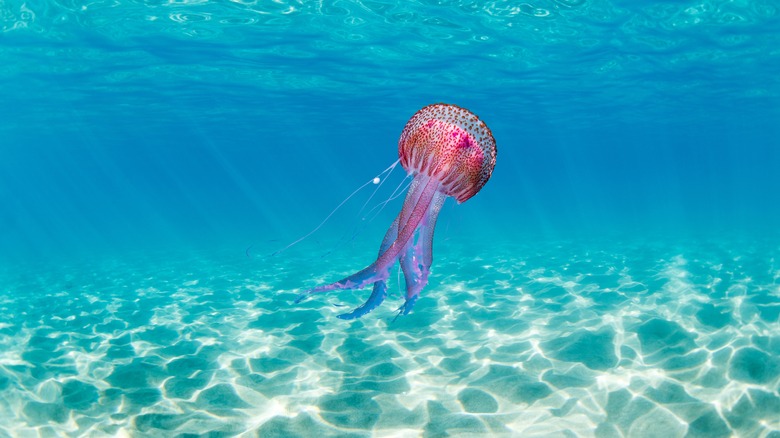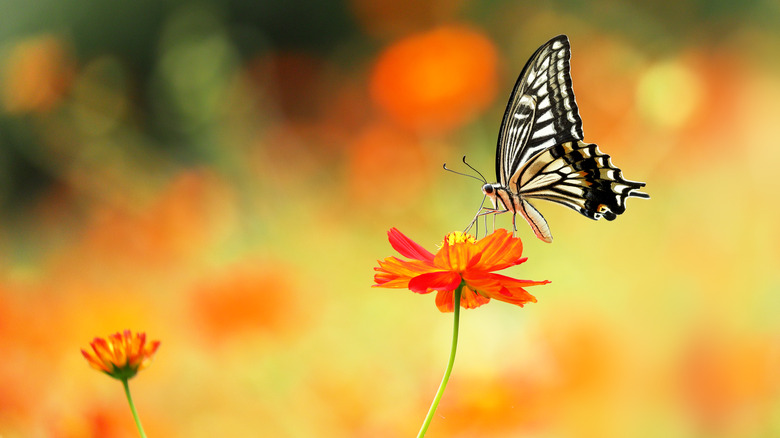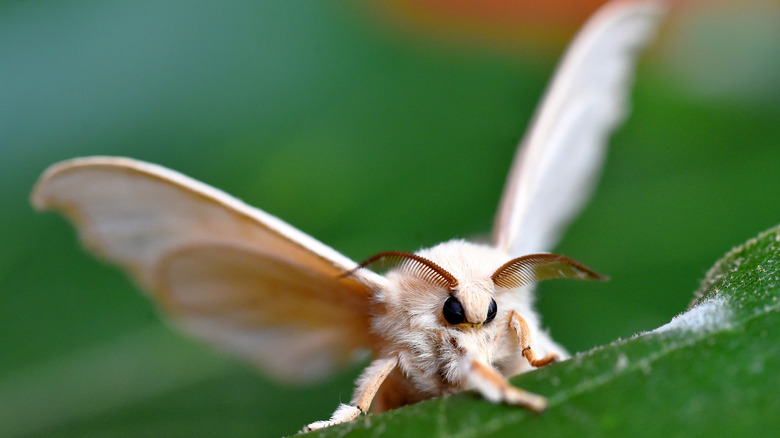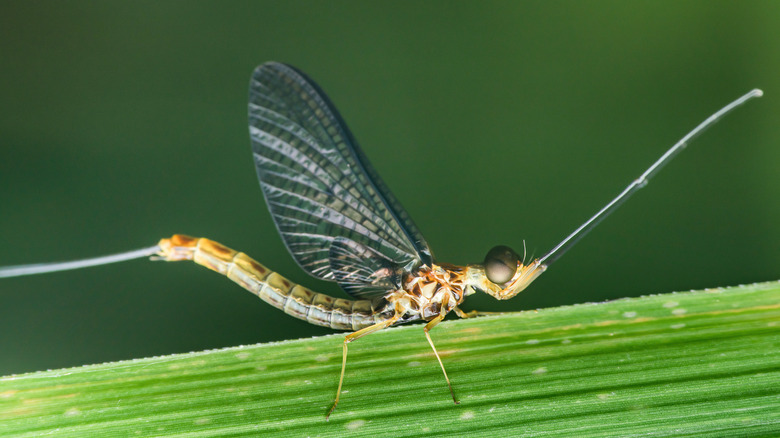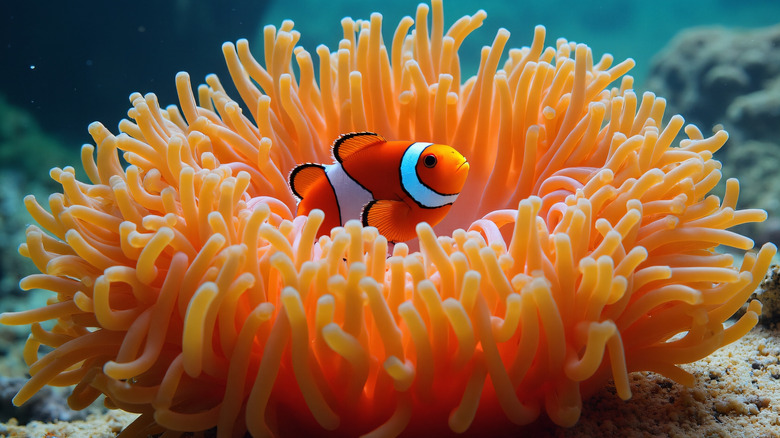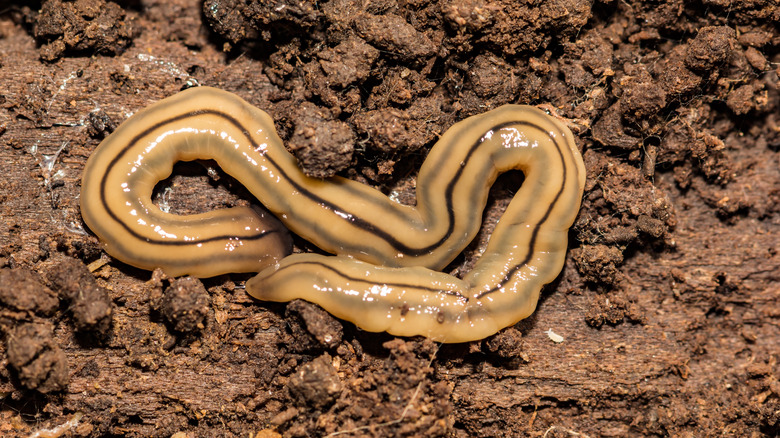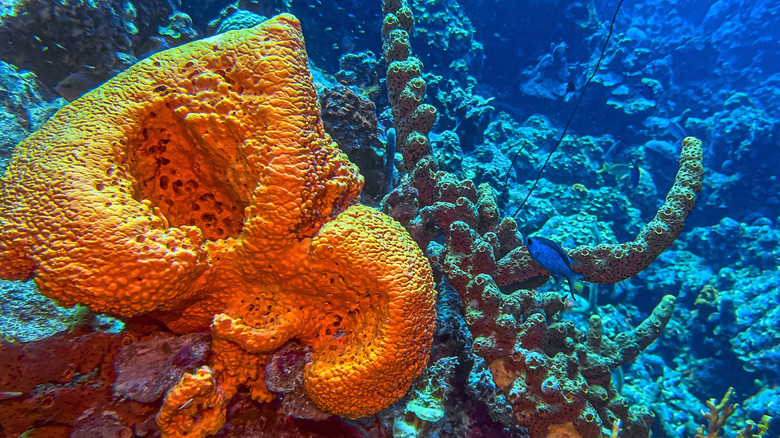8 Animals That Don't Poop (And What They Do Instead)
When animals eat, they take in a variety of nutrients from their foods. Any nutrients that are viable for supporting life are absorbed into the body, with macronutrients like carbohydrates necessary for providing everyday energy. Anything that is not digested is then expelled as waste product as poop. This process is largely the same for humans and most other animals on the planet. But there's more to the process than waste; animal poop can serve many ecological purposes, including acting as a natural fertilizer source, supporting biodiversity, and assisting humans in helping with animal conservation.
However, it's a misconception that all animals poop, as there are a few unique exceptions to this rule. There are even some species that poop and pee at the same time, including most birds. Others may still release stool — except they just don't go for long lengths of time. When it comes to animals that don't poop at all, though, there are usually some interesting anatomical differences that can help to explain this. In a few cases, some of these animals just don't live long enough to eat or poop.
Eiffinger's tree frog tadpoles
Like reptiles and amphibians in general, adult frogs poop. And like humans, their internal organs — including their complex digestive systems — are confined within their trunks. Any waste products that are left over from eating (both urine and poop) exit via the cloaca. Generally speaking, tadpoles poop, too. However, scientists have recently discovered that Eiffinger's tree frog tadpoles do not poop until they emerge as adults. These findings were reported in 2024 in the journal Ecology, in which researchers noted that the tree frog tadpoles did not poop under laboratory observation.
While adult Eiffinger's tree frogs do poop, their tadpoles may not do so for several weeks. Instead, they retain any solid wastes until they metamorphosize into frogs, at which point, they'll release it. Interestingly, researchers believe that the tadpoles' ability to "hold it" for so long is all attributed to their subconscious effort to help keep their surroundings as clean as possible. Researchers in the aforementioned study believe that since these tadpoles need to survive in little water, they don't want to contaminate their living quarters with ammonia that would release upon defecation.
Jellyfish
Jellyfish are arguably some of the most fascinating sea creatures out there. Aside from their interesting movements in the water, jellyfish also have some defining anatomical characteristics. About 95% of their bodies consist of water, and they don't have brains or hearts. In addition, instead of pooping out of an anus, these creatures expel waste from one hole that is technically not a typical anus or a mouth.
Unlike other types of more complex animals, the digestive process of a jellyfish is actually pretty straightforward. Jellyfish eat and get rid of waste all within the same orifice using something known as a two-way digestive system. This digestive system consists of one cavity that is both an intestine and a stomach. After the jellyfish take in food, they then get rid of any waste products through the same hole, a process that can be considered rather simplistic. Nevertheless, researchers are still continuing to study jellyfish adaptations, including the digestive systems of these species. To that end, scientists have encountered some interesting findings. For example, some species have been found to actually develop new anus-like holes after each waste expulsion.
Butterflies
Butterflies are undoubtedly important, and they're also some of the most coveted insects around the world. Due to declining populations, many home gardeners are even planting native flowering plants to help support their feeding needs. While their feeding habits can vary based on their life stage and environment, most butterflies feed on a variety of nectar-producing flowers. With all the food they eat though, butterflies do not poop.
In contrast, butterfly caterpillars eat and poop quite often; these frequent droppings are also called frass. They continue eating as they emerge from their cocoons as adult butterflies. However, they stop formally pooping altogether once they reach adulthood. Interestingly, they don't produce urine, either, though some butterflies have been known to emit small amounts of water on occasion in lieu of both poop and urine. Also, if you have ever seen a butterfly excreting a red liquid, this is a rare event that is attributed to leftover cocoon residue — it is not butterfly poop.
Silk moths
Silk moths are the adult forms of the famous silkworm caterpillars. These larval caterpillars are notable for the extremely long pieces of silk they spin to make their cocoons, though silkworm excrement is also revered by some for its possible medicinal capabilities, and you can even buy it online. In short, since silkworms are known for eating and pooping a great amount, you might automatically assume that the adults do, too. However, adult silk moths do neither one of these things.
Both silkworms and silk moths do tend to be large thanks to all of the eating during the larval stages, but adult moths don't have working mouths (some have no mouth at all, while others have one that is only vestigial) or digestive systems. This makes it impossible for them to eat and poop like other creatures might, and they only live for about a week. Instead, these adult silk moths spend the rest of their short lifespans trying to reproduce.
Mayflies
As their name indicates, mayflies tend to be active during the month of May, as well as other warm times of the year, and they are technically aquatic species because they spend most of their lives as nymphs in freshwater. But like silk moths, mayflies do not live for very long once they reach adulthood. Also similarly, these adult insects do not eat, and they do not poop. In fact, while adult mayflies technically have mouths, these aren't considered functional. What little digestive systems they do have contain only air, and it mostly acts as a feature that helps them float on top of water easily.
Interestingly, while mayfly nymphs can survive in water for a year (and sometimes up to four), adults only live for about a day (in some cases, the adults might live for only five minutes!). All of their food consumption happens during their nymph stages, when mayflies primarily eat plants, though, occasionally, they might eat other insects, too. Once they're adults, mayflies are only concerned with reproducing and laying eggs for future generations before they die shortly thereafter.
Sea anemones
If you've ever seen a sea anemone, you know that this animal has quite a deceptive appearance. The physical characteristics of sea anemones may give them a flower-like appearance, but their tentacles contain venom to help protect themselves from predators and to capture prey. The sea anemone diet is a carnivorous one that consists of a variety of fish, crabs, plankton, shrimp, jellyfish, and more. To help capture prey, the sea anemone stings nearby animals with a neurotoxin that effectively paralyzes it. Then, the invertebrate guides the food source into its mouth for easy consumption.
Sea anemones are genetically complex creatures with a competent method of hunting, but they have simple digestive systems. Like some other animals that don't poop, sea anemones eat food and release waste out of the same body opening — their mouths, in other words. In fact, the mouth also happens to be the only opening on the sea anemone's body, and ejected from it, their waste mostly contains ammonia, much like other aquatic invertebrate species.
Flatworms
True to their name, flatworms are invertebrates that have mostly flat bodies. Not only do these creatures lack any skeletal system, but they also don't have circulatory, respiratory, or digestive systems. What's more, since many flatworms are parasites, you might be wondering how they eat and process waste.
It's true that flatworms do eat and emit waste. However, most do not have anuses, although some species are equipped with anal pores. In either case, though, flatworms do not poop. Instead, these invertebrates depend on specialized cells that aid in feeding and waste excretion. They facilitate those processes by attaching themselves to their food source, then spitting digestive juices directly onto that food before they eat it, effectively sucking in whatever components were digested. Anything that flatworms cannot digest is immediately excreted through their mouths. Once they ingest any viable proteins and other nutrients, they can then move on to their next meal.
Sponges
Sponges are another type of sea creature that doesn't poop. There are many types of sea sponges, and they are known to eat a surprisingly large amount of food every day. What's more, these invertebrates have many interesting characteristics when it comes to their feeding habits, including amoebocyte cells that help transport food particles to other cells within the sponge. In general, though, sponges are also known as "filter feeders," as they primarily eat microorganisms that they filter through the water around them, going through multiple liters of water in just a single day.
With such high quantities of food, you might be wondering how sponges process any waste after eating. One thing sponges don't have, however, are traditional digestive systems. Without a formal way to digest foods, sponges cannot produce any poop. This doesn't mean sponges can't get rid of waste, though. There are a few ways this can happen. It's primarily believed that sponges rely on specific cells called choanocytes which individually to take in and digest tiny food particles and excrete waste. These cells also pass on nutrients to amoebocytes, some of which also might aid in the process of digestion. But that's not the only way sponges deal with digestion: A 2022 study published in Current Biology also found that sponges may also be able to "sneeze" to get rid of certain waste matter, such as particulate waste.
